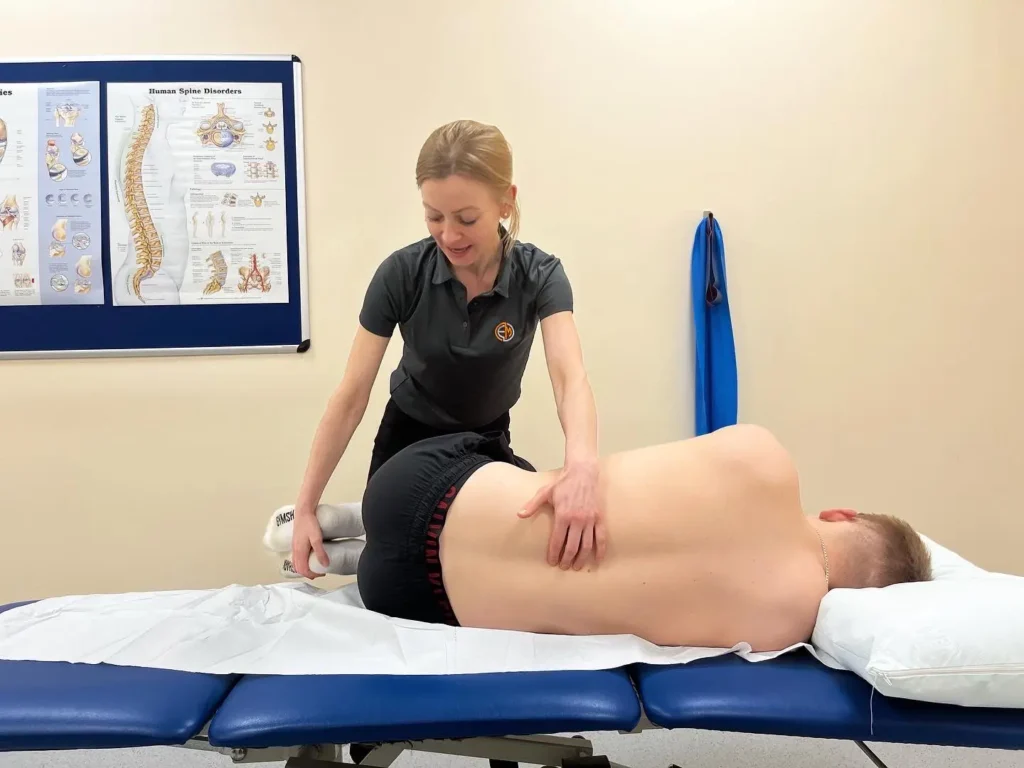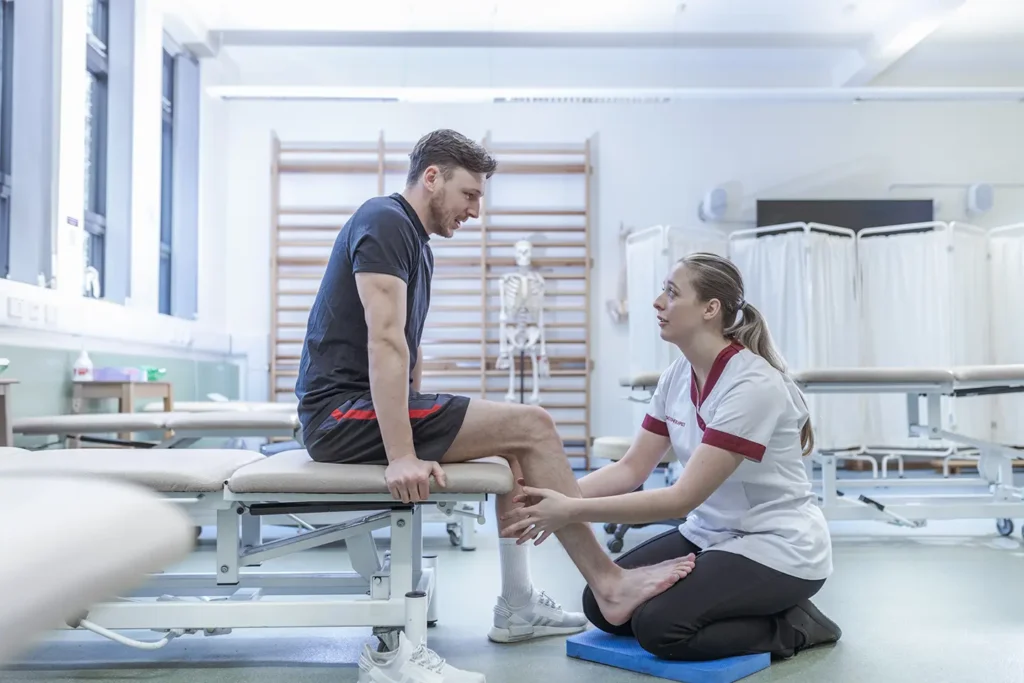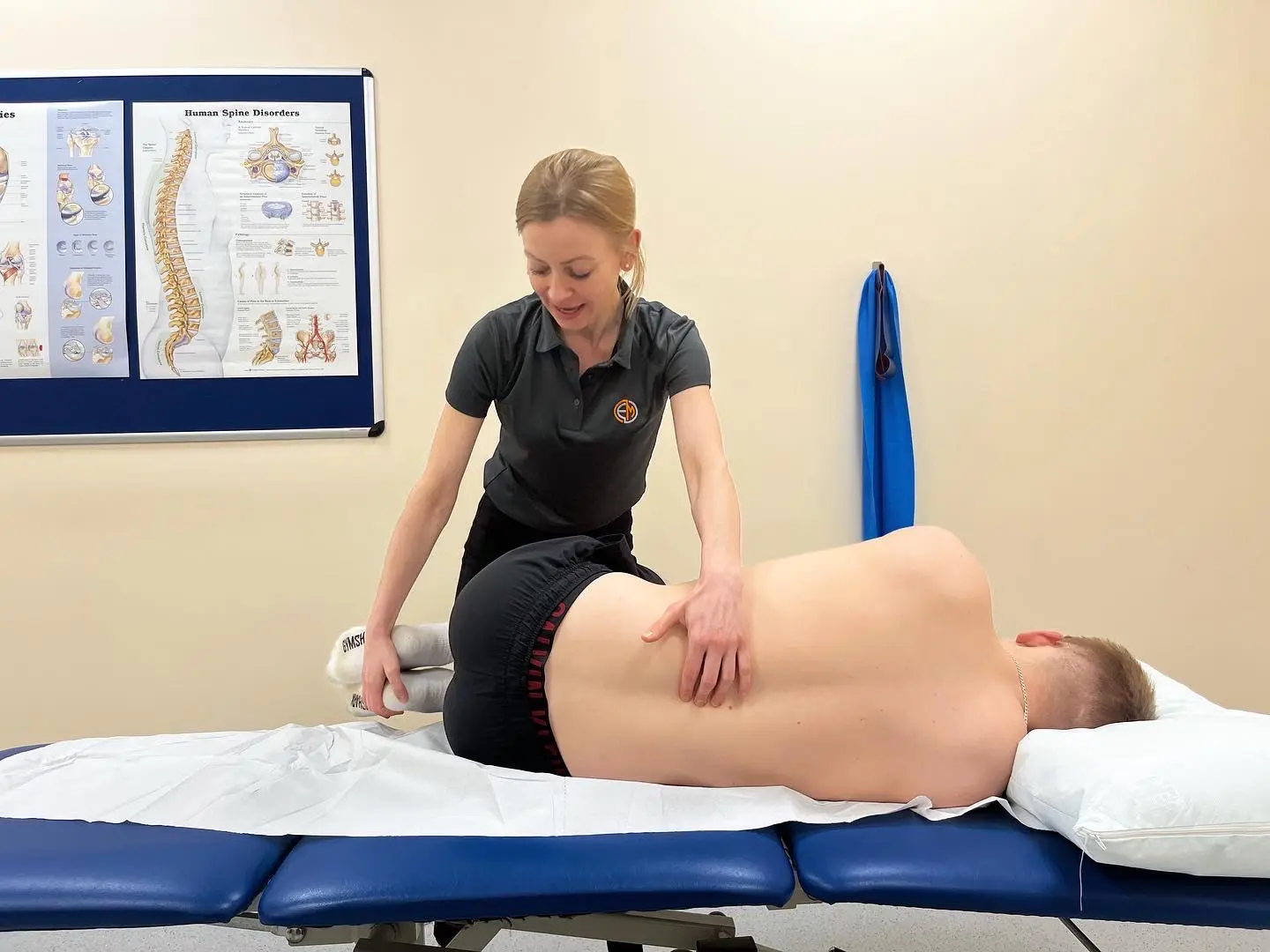When it comes to addressing musculoskeletal issues, osteopathy and physiotherapy stand out as effective care methods. While they share a common goal of alleviating discomfort and enhancing mobility, their approaches are distinct and rooted in different philosophies and treatment strategies. This often leads to a bit of confusion: if both aim to improve physical well-being, how exactly do they differ? Our objective with this post is to shed light on these differences. Our goal is to provide you with the knowledge needed to make informed decisions about your osteopathy and physiotherapy care. Whether you’re dealing with chronic pain, recovering from an injury, or simply seeking to maintain optimal physical health, understanding the “Osteopathy vs Physiotherapy” debate is a crucial step towards choosing the path that best suits your needs and preferences.
What is Osteopathy?

Osteopathy is a holistic form of manual therapy that emphasizes a comprehensive approach to health and well-being. It is founded on the principle that an individual’s health depends significantly on the harmonious function of their skeleton, muscles, ligaments, and connective tissues.
Osteopaths employ various techniques, such as palpation, soft tissue manipulation, physical manipulation, and stretching. These methods aim to improve joint mobility, alleviate muscle tension, enhance the supply of blood and nerves to tissues, and support the body’s natural healing mechanisms. Additionally, osteopaths can advise on posture and prescribe exercise to help with recovery, promote overall health, and prevent the reoccurrence of symptoms.
This approach to treatment is designed to improve the overall health across all body systems by manipulating and strengthening the musculoskeletal framework. It addresses a wide range of medical conditions, not just those affecting the muscles and bones. The treatment is non-invasive and drug-free, enhancing the patient’s mobility, reducing pain, and facilitating natural healing processes.
Osteopathy is regulated by law in the UK, ensuring practitioners meet high standards of competency, conduct, and safety. All osteopaths must be registered with the General Osteopathic Council (GOsC), which oversees the profession to maintain these standards and protect public welfare.
Patients of all ages and from various walks of life—ranging from young individuals to older adults, manual labourers to office professionals, and athletes to pregnant women—seek osteopathic treatment for diverse conditions. These include back pain, changes in posture due to pregnancy, postural issues from driving or work strain, arthritis pain, and minor sports injuries, among others.
Osteopathy stands out for its whole-person approach, which aims not just to treat specific symptoms but also to improve overall well-being and prevent future health issues.
What is Physiotherapy?

Physiotherapy is a science-based healthcare profession that plays a pivotal role in recovering and rehabilitating individuals affected by injury, illness, or disability. It adopts a “whole person” approach to healthcare, centring on patient involvement in their care through education, awareness, empowerment, and active participation in their treatment.
The essence of physiotherapy lies in its focus on movement as the core aspect of both prevention and recovery. By emphasizing the importance of movement, physiotherapists work towards maximizing an individual’s quality of life and movement potential within various domains, including health promotion, injury prevention, treatment, and rehabilitation.
Physiotherapists are highly trained healthcare professionals who employ various techniques to assist their patients. These include exercise therapy, which is tailored to each individual’s specific needs to improve their general health and mobility, and manual therapy techniques, where physiotherapists use their hands to manipulate, mobilize and massage the body to alleviate pain and stiffness. Additionally, education and advice play a significant role in physiotherapy, guiding patients on preventing injuries and maintaining a healthy lifestyle through proper posture and movement techniques.
Key Similarities between Osteopathy and physiotherapy
Osteopathy and physiotherapy share a core commitment to improving a patient’s health through non-invasive, drug-free treatment methods, focusing on relieving musculoskeletal pain, enhancing mobility, and fostering overall well-being. Despite their distinct approaches and philosophies, both professions utilize evidence-based practices and are dedicated to ongoing research to refine their methods of care.
Key similarities between osteopathy and physiotherapy include their holistic approaches to treatment, recognizing the importance of treating the whole person rather than just the symptoms. Both disciplines employ manual therapy techniques such as manipulation and massage to address bodily discomfort and dysfunction. Furthermore, they advocate for the body’s natural healing processes, encouraging practices that support self-healing and maintenance.
Both osteopaths and physiotherapists utilize therapeutic exercises as part of their treatment protocols. Although traditionally, physiotherapists have been more associated with exercise-based rehabilitation, and osteopaths are increasingly incorporating corrective exercises into their treatment plans to support recovery and prevent future issues.
In essence, while there are distinctions in their foundational philosophies and specific treatment techniques, osteopathy and physiotherapy both aim to achieve similar health outcomes for their patients. Their shared goals underline the complementary nature of these professions in the broader landscape of holistic and rehabilitative health care, underscoring their integral roles in patient recovery and health maintenance.
When to Consider Each
Deciding whether osteopathy or physiotherapy is right for you depends on various factors, including the nature of your condition, your personal health goals, and your preferences for treatment approaches. Chatting with us is an excellent first step to discuss your options and determine the most suitable path for your needs.
Osteopathy
Osteopathy might be a beneficial starting point if you’re experiencing recurring pain or issues that you feel are related to the overall function of your body. Osteopathy is known for its holistic approach, focusing on treating the body as a single unit where all systems are interconnected. This form of therapy uses a range of techniques to restore balance and promote the body’s natural healing processes. It’s particularly suitable for a wide range of conditions, including musculoskeletal pain, sports injuries, headaches, and postural problems. Osteopaths take into account not only your physical symptoms but also your lifestyle, emotional well-being, and overall health.
Physiotherapy
Physiotherapy on the other hand, is more appropriate for specific injuries and conditions requiring guided rehabilitation programs. It is especially effective for patients recovering from surgeries, dealing with musculoskeletal conditions, or requiring support for chronic diseases such as arthritis. Physiotherapy emphasizes restoring and maximizing physical function through exercise-based treatments, manual therapy, and various therapeutic modalities. Physiotherapists develop personalized treatment plans that focus on strengthening weakened muscles, improving flexibility, and enhancing overall function and mobility.
Ultimately, the choice between osteopathy and physiotherapy should be based on your specific situation and health goals. Both practices offer effective treatment options but differ in approach, techniques, but they differ in approach, techniques used, and focus areas. While osteopathy provides a holistic approach aimed at treating various conditions by addressing the body as a whole, physiotherapy offers a more targeted approach with a strong emphasis on exercise-based rehabilitation and specific physical impairments.
Regardless of which path you choose, the key is to find a practitioner who understands your individual needs and can work with you to achieve your health and wellness goals. Remember, the best practitioner often depends on the individual case, and in some instances, a combination of both osteopathy and physiotherapy might provide the most efficient course of therapy.
Conclusion
Osteopathy and physiotherapy are invaluable assets within the healthcare landscape, each bringing unique strengths and methodologies to patient care. Whether through the holistic, whole-body approach of osteopathy or the targeted, exercise-based rehabilitation strategies of physiotherapy, these practices offer diverse pathways to healing, recovery, and enhanced well-being.
Choosing the right practitioner is pivotal to achieving the best outcomes for your health. It is essential to seek professionals who are not only qualified but also committed to upholding the highest standards of care within their respective fields. Qualifications, experience, and a dedication to patient-centered care should guide your selection process.
For those who may be considering either osteopathy or physiotherapy or perhaps both, it’s worthwhile to explore clinics that house a multidisciplinary team encompassing both osteopaths and physiotherapists.
Such environments facilitate a collaborative approach to patient care, allowing for tailored treatment plans that draw upon the collective expertise of both disciplines. If you’re in search of a qualified practitioner, don’t hesitate to reach out to clinics that offer both services. This option not only provides convenience but also ensures that you receive a comprehensive assessment and treatment plan suited to your unique health needs.
Remember, the journey to health and wellness is personal, and the choice between osteopathy and physiotherapy should align with your individual health goals, preferences, and conditions. By engaging with qualified practitioners who are skilled in these therapeutic practices, you can embark on a path towards improved health, guided by professionals dedicated to supporting your journey every step of the way.




